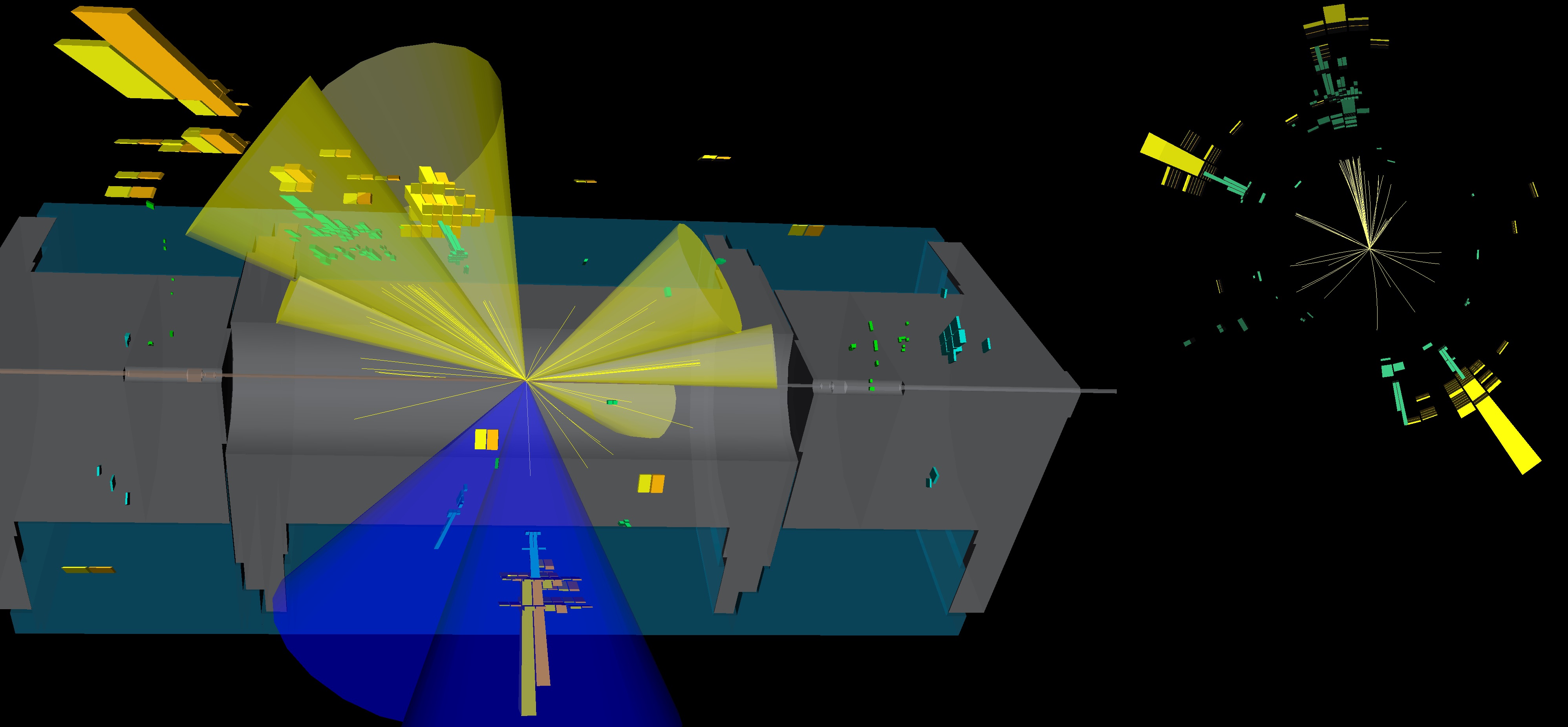ATLAS measures key Higgs boson interaction with high precision
2 August 2021 | By
The ATLAS Collaboration releases new measurements of the Higgs-boson decay to tau leptons. The result provides new insight into the “Yukawa coupling”, a key interaction of the Higgs boson.
How does the Higgs boson interact with other particles? And what can the strength of its interaction – or coupling – tell us about the Universe? According to the Standard Model, the heavier a particle is, the stronger it will couple to the Higgs boson. That said, different mechanisms govern the Higgs-boson coupling with force-carrier particles (like the W or Z bosons) and with matter particles (fermions). The latter is known as the Yukawa coupling; measurements of this property not only give insight into the nature of mass, they may also provide hints of new physics phenomena.
The observation of the Higgs-boson decay to pairs of tau leptons (τ) provided direct evidence of the Yukawa coupling. The H→ττ channel is experimentally challenging to explore, since tau leptons decay into at least one lighter charged particle and at least one neutrino, which goes undetected by the ATLAS experiment. The H→ττ channel is also affected by a large amount of background from the Z boson decaying to tau leptons, which is 500 times larger than the signal produced by the Higgs boson decaying into tau leptons.
The ATLAS Collaboration has released new measurements of the Higgs-boson decay probability to tau leptons in its four major production modes: gluon fusion (ggF), vector-boson fusion (VBF), the associated production with a W or Z boson (WH, ZH), and the associated production with a top-quark pair (ttH). The new analysis examines the full ATLAS dataset collected during Run 2 of the LHC (2015–2018), incorporating several analysis improvements and considering every possible tau-lepton decay, either into light leptons (electrons or muons) or pions, and neutrinos, as mentioned above.
The Yukawa coupling of the Higgs boson to tau leptons has been established with the best precision achievable using the ATLAS Run 2 dataset.
Researchers designed specific signal categorisations to enhance the rare WH/ZH and ttH production mechanisms in the H→ττ channel. To examine these mechanisms, as well as VBF production, researchers developed new multivariate analysis techniques to extract the few signal events from the overwhelming Z-boson background, as illustrated in Figure 1.

They also made key updates to the estimation of the dominant Z→ττ background by studying data of Z-boson decays into lighter charged leptons (electrons and muons). Since electrons and muons are experimentally much easier to detect than tau leptons – and the decay processes are very similar to Z→ττ – the data could be reinterpreted using simulated tau leptons. This results in a more accurate description of the Z→ττ process and reduced background uncertainties.
All of these improvements led to an unprecedented precision in the measurement of H→ττ, as summarised in Figure 2. Researchers have now established the H→ττ process with an uncertainty of only 12%, improving the previous result by more than a factor of two. The overall uncertainty is dominated by the systematic-error component, mainly related to theoretical prediction uncertainties and Monte Carlo sample statistics. Further, the ATLAS Collaboration has now observed VBF production in this channel, with a significance of 5.3 standard deviations with respect to the background-only hypothesis. They also report evidence of ggF production with a significance of 3.9 standard deviations.
The Yukawa coupling of the Higgs boson to tau leptons has been established with the best precision achievable using the ATLAS Run 2 dataset, both inclusively and in each of the main LHC Higgs-boson production modes. This crucial milestone sets a baseline for current and future searches for physics beyond the Standard Model in the Higgs sector in tau-pair final states.
Links
- Measurements of Higgs boson production cross-sections in the H→τ+τ- decay channel in proton–proton collisions at 13 TeV with the ATLAS detector (ATLAS-CONF-2021-044)
- EPS2021 presentation by Michaela Mlynarikova: Measurements of Higgs boson production in decays to two tau leptons with the ATLAS detector
EPS2021 poster by Frank Sauerburger: Measurement of the Higgs boson coupling to tau leptons in proton-proton collisions at 13 TeV with the ATLAS detector at the LHC - EPS2021 presentation by Stephane Willocq: Highlights from the ATLAS Experiment
- EPS2021 presentation by Kerstin Tackmann: Higgs Measurements
- See also the full lists of ATLAS Conference Notes and ATLAS Physics Papers.





